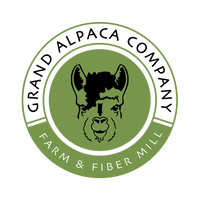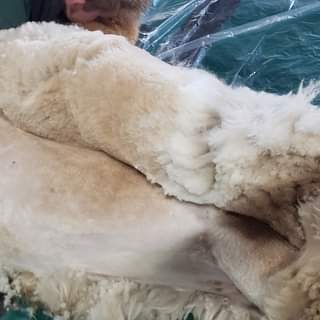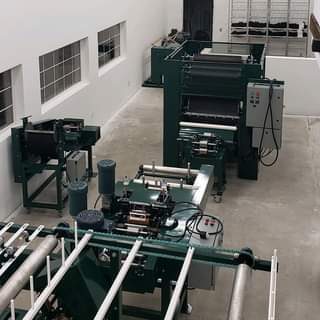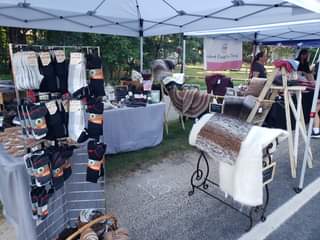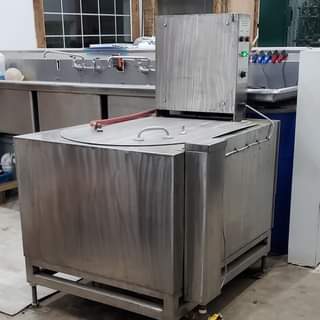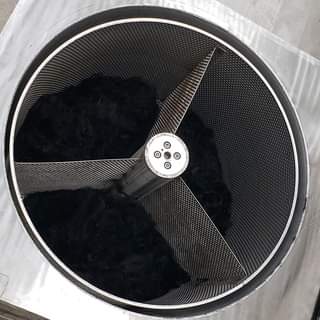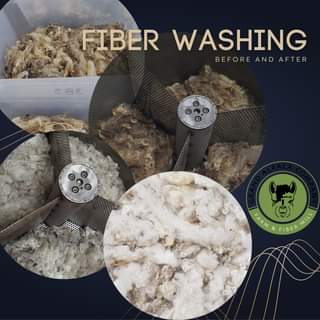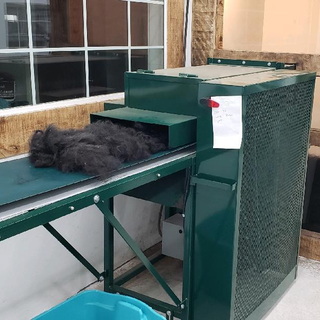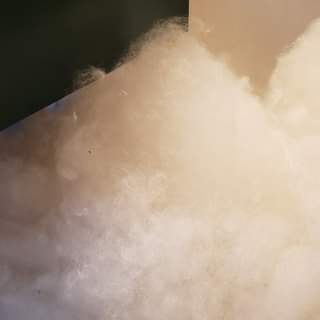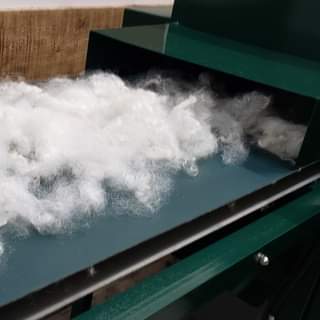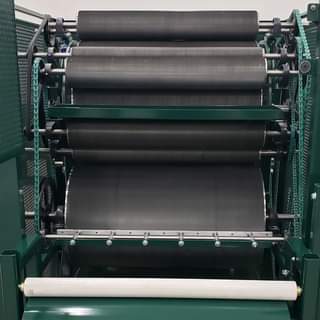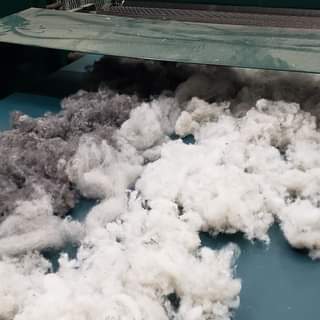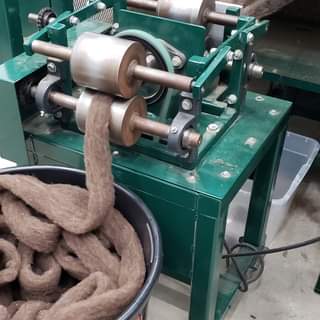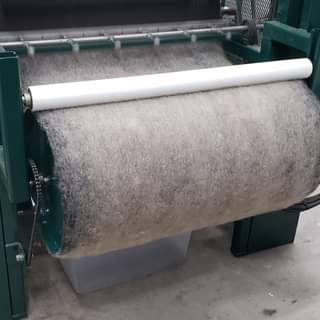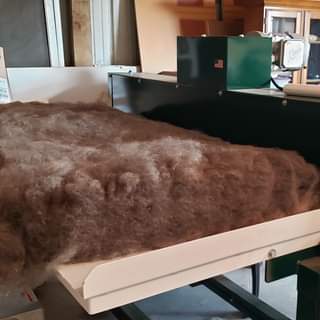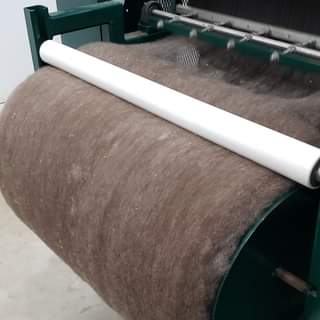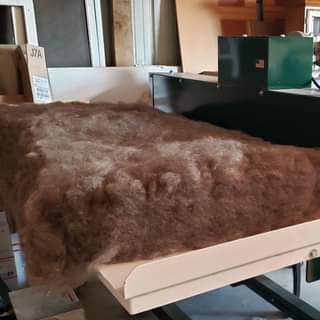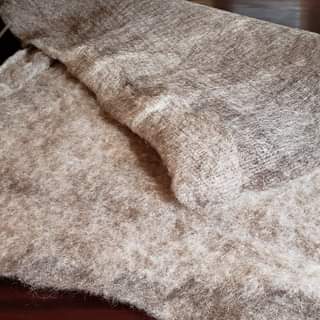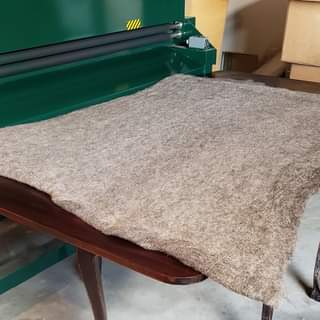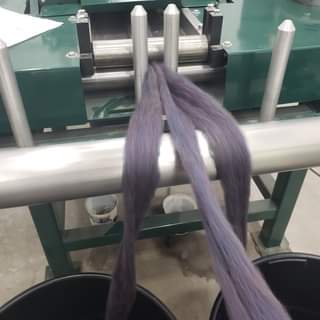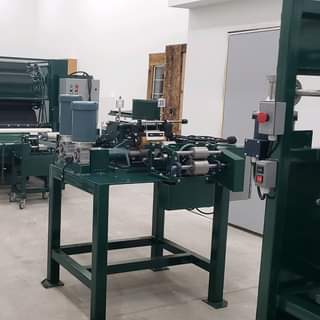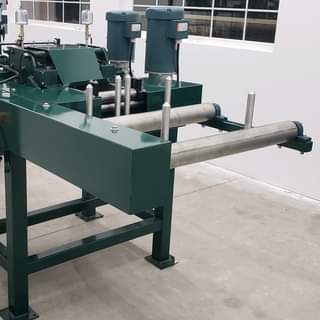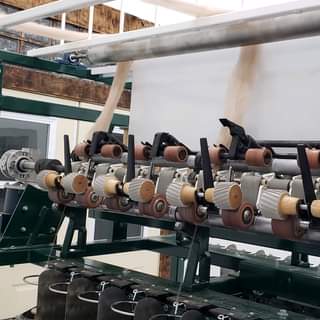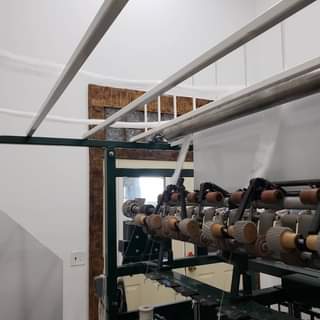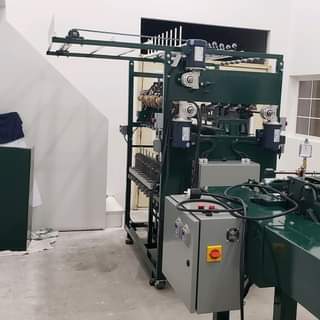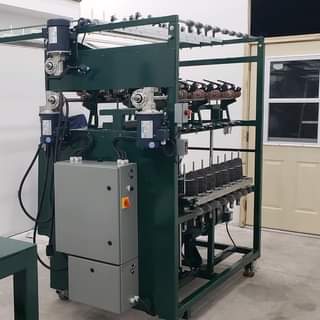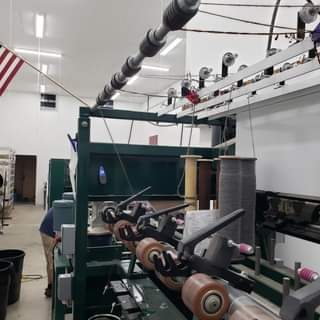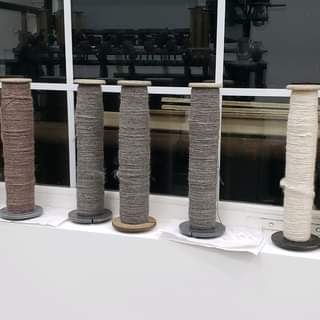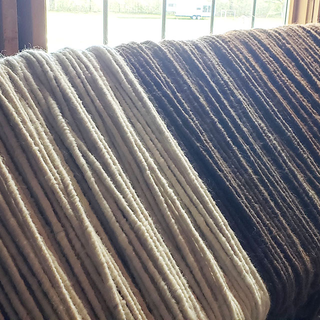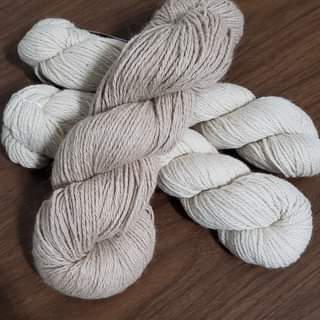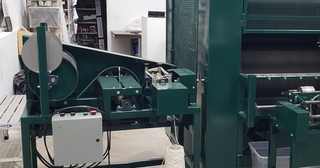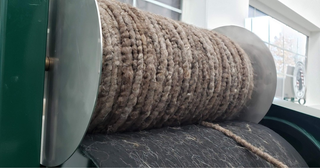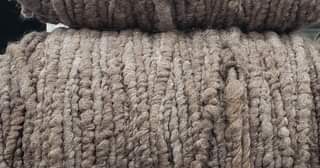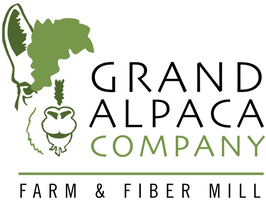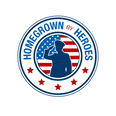What does Grand Alpaca Fiber Mill do?
We have many people that ask questions about what we do, so we wanted to get you some insight of what we do at our mini fiber mill. Welcome, we are excited to have you! Join us for a weekly post and as we take you through our fiber mill.
Fiber Mill Week 1 - Shearing
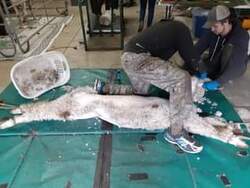
We are a farm and a fiber mill. What is a fiber mill you ask? As a fiber mill, we take raw fiber (fur) from sheep and alpacas to make roving, batting, yarn, and rug yarn. We have equipment (some photos included) that takes the raw fiber through different processes to make this happen. We will walk through some of these steps in the weeks coming up. First step is, we have to take the fiber off the animals, that is harvesting our Alpacas on our farm. We shear our alpacas once a year, typically in May, before it gets too hot. We take this time to give each alpaca a good health check, give shots if needed, trim toe nails and then of course shear them. It is like a spa day for an Alpaca. We have included a few photos, promise there is no pain caused on our animals.
Fiber Mill Week 2 - Skirting & Cleaning the Fleece
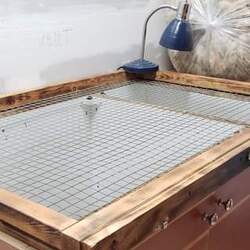
Happy Saturday! Last week we shared about the first step in the mill, which was harvesting the fiber (fleece) from the animals. The next steps are skirting and cleaning. When we skirt the fiber, we are looking at the length and fiber type to make sure what we are putting together in a batch is similar. If we have 1 inch fiber with 4 inch fiber, it will create what we call "slugs" in the yarn. It is important for our customers to have their fiber at similar lengths when they drop fiber off to be processed in order to get the product they desire. Once the fiber is skirted and possibly tumbled the fiber moves on to the next step which is washing. We recently purchased a commercial fiber washing machine (photo included). It has been a huge blessing to have. This machine soaks the fiber and then washes it in the correct water temperature needed for either wool or alpaca. After the fiber passes its test for cleanliness it is placed in the drying racks. Please let us know if you have any questions or if you have some fiber you would like to have processed.
Fiber Mill Week 3 - Fleece Picker
Happy Saturday from Grand Alpaca. We are already on week 3 of explaining what a fiber mill does. Just to recap; week 1 we talked about harvesting and week 2 we talked about skirting and washing. This week we are on to the Picker. The Picker is the next step after the fiber has been dried after washing. The picker has a belt that vibrates as fiber is set on it, which starts to loosen up sand or other vegetative matter that may be stuck in the fiber. Inside the actual machine there are two rollers which slowly feed the fiber to a large drum with teeth where the actual fiber separation occurs. The separated fiber blows into the picker boxat that point it looks like cotton candy. Once it is all picked we put it into a bag to wait for the next step. At this point the alignment of the individual fibers are all over the place but most of the sand and vegetation have been removed.
Fiber Mill Week 4 - Carding Machine
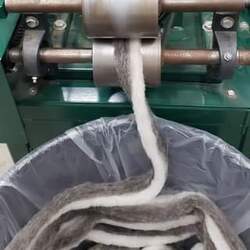
It is Saturday! This is week 4 of our lessons on the mill and what we do. Today we are going to talk about the Carding machine. The carding machine can do multiple products for us, but today we are going to talk about its main purpose and the product we use it mostly for. The carding machine is made of multiple rollers that have what I will call Velcro like teeth the grab the fiber. The fiber has already been picked and remember it is now all messy, so the carder starts to realign the fibers into all going the same direction as it goes through the rollers. As it goes through the rollers it comes out the other end in and through an attachment piece to make roving. The roving is a long strip of fiber that is all organized and going in the same direction. They are not all in a perfect row, but it is a good start. The process can stop here if we want, but we will continue on in the weeks to come. Roving can be used for multiple things, hand spinners like to use roving, some people like it this way to make dryer balls or other craft items. This is also the first step into making yarn. Please look at the photos. Let us know if you have any questions. Any feedback would be great on these posts. Also if you have fiber you would like to have processed please select an order form from the menu.
Fiber Mill Week 5 - Batting
Welcome to another Saturday lesson of the fiber mill.
Last week we discussed the carding machine creating roving. This week we are still speaking about the carding machine, but we are going to discuss another product it makes for us called batting. Batting is like the inside of a pillow, stuffing, quilt. It looks light and fluffy, some hand spinners like to work with batting, some like to have it needle felted (we will talk about in coming weeks), some use it as stuffing for quilts, and some use it for their creative craft projects. The clean freshly picked fiber is weighed out to meet the customers requested weight and is run through the carding machine. The fiber exits the carding machine and transfers to a large drum roller. We then remove the fiber from the drum roller and there you have a sheet of batting. Please let us know if you have any questions. If you would like more information on having your fiber processed please message or call.
Last week we discussed the carding machine creating roving. This week we are still speaking about the carding machine, but we are going to discuss another product it makes for us called batting. Batting is like the inside of a pillow, stuffing, quilt. It looks light and fluffy, some hand spinners like to work with batting, some like to have it needle felted (we will talk about in coming weeks), some use it as stuffing for quilts, and some use it for their creative craft projects. The clean freshly picked fiber is weighed out to meet the customers requested weight and is run through the carding machine. The fiber exits the carding machine and transfers to a large drum roller. We then remove the fiber from the drum roller and there you have a sheet of batting. Please let us know if you have any questions. If you would like more information on having your fiber processed please message or call.
Fiber Mill Week 6 - Needle Felter
Welcome to this weeks edition of learning about the Fiber Mill.
Last week we discussed the carding machine creating batting. This week we are going to skip ahead and talk about the needle felting machine.
Since we did do batting last week, this machine is used with batting. If you remember batting is like the inside of a pillow, stuffing, quilt as it looks light and fluffy when it is done on the carding machine. The needle felting machine has over 500 hundred specialized felting needles that go up and down at the same time. As the batting makes its way through the machine, the needles are compressing the individual fibers together which make the sheet of batting stronger. The more passes through the machine the stronger the batting becomes. This is now needle felted batting. This can be used to create several items such as: batting for quilts, boot insoles, arts and crafts, blankets, and gardening, just to name a few. Please let us know if you have any questions. If you would like more information on having your fiber processed please message or call.
Last week we discussed the carding machine creating batting. This week we are going to skip ahead and talk about the needle felting machine.
Since we did do batting last week, this machine is used with batting. If you remember batting is like the inside of a pillow, stuffing, quilt as it looks light and fluffy when it is done on the carding machine. The needle felting machine has over 500 hundred specialized felting needles that go up and down at the same time. As the batting makes its way through the machine, the needles are compressing the individual fibers together which make the sheet of batting stronger. The more passes through the machine the stronger the batting becomes. This is now needle felted batting. This can be used to create several items such as: batting for quilts, boot insoles, arts and crafts, blankets, and gardening, just to name a few. Please let us know if you have any questions. If you would like more information on having your fiber processed please message or call.
Fiber Mill Week 7 - Pin Drafter
Here is this weeks edition of the processes in the fiber mill. In week 4 (October 8th) we discussed the carding machine creating roving. This week we are going to talk about the Pin Drafter which is used after we have the finished roving. This step is typically done when the end product is to be yarn. In the process of running it through the Pin Drafter the roving is weighed to reach the desired weight of yarn requested. The Pin Drafter consists of over 70 combs which the fiber is pulled though in an effort to further align the fibers as well as create a more consistent sliver of roving. Pin drafted roving makes spinning easier for either our spinning machine or for hand spinners. We typically run the roving through the pin drafter at least two times in order to reach the highest quality yarn.
Please let us know if you have any questions. If you would like more information on having your fiber processed please message or call.
Please let us know if you have any questions. If you would like more information on having your fiber processed please message or call.
Fiber Mill Week 8 - Spinner
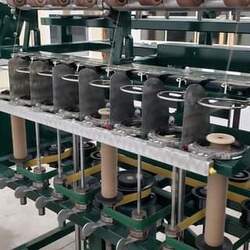
Today is our 8th edition of educating our followers on our fiber mill, please look back to our past Saturday's posts to catch up. Our last edition we spoke about the pin drafter and why it is important in the step of making yarn. This week we will go over the spinner as the yarn has now completed at least two passes through the pin drafter. The spinner will now take the sliver of roving and twist the fibers so tightly that they turn into a string which is equal to one ply. The sliver actually passes through three shafts running at different speeds in order to create the desired weight and twist. The end result at the spinner is a single string on a bobbin which is now ready for the plying machine.
Please let us know if you have any questions.
Please let us know if you have any questions.
Fiber Mill Week 9 - Plyer
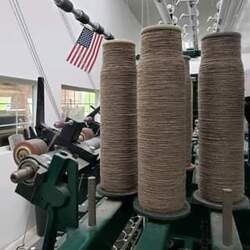
Good Morning and Happy Saturday. This weeks edition of our mill process we are looking at the plyer. Last week we went over the spinner, teaching how the sliver of pin drafted roving is run through 3 different shafts that run at different speeds to create a single string on the bobbin. The completed bobbin is now moved over to the other side of the machine, which is the plyer side. The bobbin is placed in the machine along with 1 to 3 others that will be twisted together to create a plied yarn. This machine allows us to create up to a 4-ply yarn at different weights. We adjust our speeds to ensure we do not over-twist or under-twist the yarn because there isn't anything worse than working with over-twisted yarn. Unless you enjoy untangling knots!
Fiber Mill Week 10 - Skein Winder
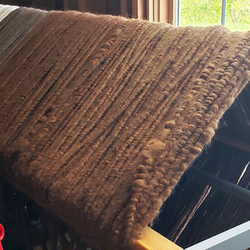
Good Morning and Happy Saturday. We are getting down to the last few pieces of equipment. Last week we ended with finished yarn on a bobbin and now we have to remove the yarn from the bobbin in order to give the completed product back to the customer which takes us to this weeks machine, the skein winder. Our customers select how they would like their finished product returned to them. They are able to select to receive it by length or weight. Typically most skeins end up between 3.5 and 4 ounces finished. Once we remove the yarn from the skein winder we twist them into a hank for the customers final product. We do also have a cone winder if the customer prefers to have their yarn back on a cone. We have posted photos of the skein winder that shows rug yarn being measured as well as photos of yarn on the cones and as hanks.
Fiber Mill Week 11 - Rug Machine
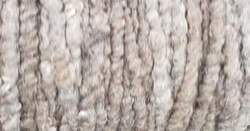
Good Morning and Happy Saturday of our Thanksgiving Weekend. We are officially on our last significant piece of mill machine equipment. The Rug Yarn Maker! The Rug Yarn machine is an additional machine that attaches to the carding machine. We are able to use the short fibers and the left overs from other parts of the processing to make the rug yarn. We can have fun with our creative side as we blend and alternate colors on the carding belt. Rug yarn has a core such as cotton, poly string, twine, etc which can be chosen based on your particular project.
As part of Small Business Saturday, we encourage you to support small businesses.
If you would like more information on having your fiber processed please message or call.
As part of Small Business Saturday, we encourage you to support small businesses.
If you would like more information on having your fiber processed please message or call.
Please reach out to us either by phone or email with any questions, comments or concerns. Thank you. We hope you enjoyed learning out our fiber mill.
